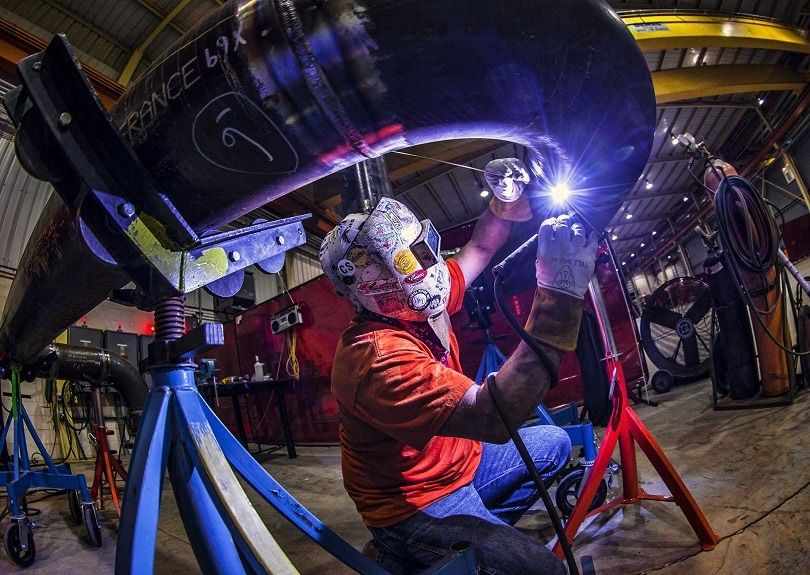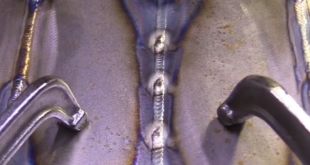Controlling Heat Input and Bead Appearance in Welding
Welding is a complex process that demands precision and control to ensure the creation of strong and reliable joints. One crucial aspect of welding that significantly influences the outcome is the management of heat input. The meticulous regulation of heat during welding plays a pivotal role in determining not only the bead appearance but also the overall quality of the weld.
Importance of Controlling Heat Input
Controlling heat input is paramount in welding due to its direct correlation with the metallurgical properties of the weld. The amount of heat applied during the welding process can profoundly affect the microstructure of the welded joint. Excessive heat input can lead to undesirable outcomes such as distortion, weakened mechanical properties, and increased susceptibility to defects. On the other hand, insufficient heat input may result in incomplete fusion and a lack of bond strength.
Impact on Bead Appearance
The bead appearance, characterized by the shape and profile of the weld, serves as a visual indicator of the welding process’s effectiveness. The control of heat input directly influences the bead appearance, determining whether it is flat, convex, or concave. Each of these bead profiles has distinct implications for the structural integrity and aesthetics of the weld.
Factors Influencing Heat Input
Effective control of heat input in welding involves a nuanced understanding of several key factors. These factors collectively determine the amount of heat generated during the welding process, influencing the metallurgical characteristics and overall quality of the weld. Let’s delve into the primary influencers of heat input.
Voltage and Current Settings
Voltage and current settings are fundamental parameters in welding that directly impact heat input. Voltage refers to the electrical potential difference between the welding electrode and the workpiece, while current represents the flow of electrical charge. The combination of these settings determines the power supplied to the welding arc.
Higher voltage and current settings result in increased heat input, potentially leading to deeper penetration and a more substantial weld bead. Conversely, lower settings produce less heat, influencing the weld in the opposite direction. Achieving the optimal balance between voltage and current is essential for controlling heat input and, consequently, ensuring the desired weld characteristics.
Travel Speed
The speed at which the welding torch or electrode travels along the joint, known as travel speed, is a critical factor influencing heat input. Faster travel speeds reduce the amount of time the heat is applied to a specific area, resulting in lower heat input. Conversely, slower travel speeds increase the heat input as the weld pool is exposed to the heat for a more extended period.
Controlling travel speed is a dynamic aspect of heat input management. Welders must strike a balance to ensure that the travel speed aligns with the welding parameters and the desired outcome, whether it be a flat, convex, or concave bead appearance.
Electrode Size and Type
The choice of electrode size and type significantly contributes to heat input control. Electrodes come in various diameters and compositions, each designed for specific applications and heat requirements. Larger electrodes generally allow for higher current levels and increased heat input, while smaller electrodes may necessitate lower current settings.
Additionally, different electrode types, such as consumable and non-consumable electrodes, have varying heat transfer characteristics. The material composition and coating of the electrode also play a role in influencing heat input. Welders must carefully select the appropriate electrode size and type based on the welding process, material, and desired heat input parameters.
Controlling Heat Input for Bead Appearance
Achieving the desired bead appearance in welding is an art that hinges on precise control of heat input. The following strategies outline how welders can manipulate heat to produce specific bead profiles and minimize common defects.
Achieving the Desired Bead Profile
- Flat Beads: Flat beads are characterized by a uniform and level surface. Achieving this profile requires a balanced approach to heat input, ensuring that the weld pool is adequately fluid without excessive penetration. Controlling travel speed and fine-tuning voltage and current settings play crucial roles in producing flat beads.
- Convex Beads: Convex beads exhibit a raised profile, resembling a slight hump in the center. To achieve convex beads, welders can increase heat input by adjusting voltage, current, or using a larger electrode. The careful manipulation of travel speed is also instrumental, allowing for a more pronounced buildup of weld material.
- Concave Beads: Concave beads feature a depressed or indented center. Welders can achieve this profile by reducing heat input, often by lowering voltage, current, or using a smaller electrode. Balancing travel speed is critical to prevent excessive material buildup at the edges, resulting in a concave shape.
Minimizing Defects Through Heat Control
- Porosity: Porosity, characterized by gas pockets within the weld, can be mitigated through effective heat control. Excessive heat input can lead to increased gas absorption, contributing to porosity. By optimizing heat settings and ensuring proper gas shielding, welders can minimize the risk of porosity and enhance the overall integrity of the weld.
- Undercutting: Undercutting occurs when the base metal near the weld bead is eroded, creating a groove. Heat input influences the size and depth of undercutting. Welders can reduce undercutting by moderating heat input, adjusting travel speed, and employing proper welding techniques to ensure a consistent weld profile without excessive metal removal.
- Incomplete Fusion: Incomplete fusion results from insufficient melting and bonding between the weld metal and base metal. Heat input directly impacts the degree of fusion achieved. By carefully managing heat settings and ensuring adequate penetration, welders can minimize the risk of incomplete fusion, thereby enhancing the structural integrity of the weld joint.
Techniques for Heat Input Control
Effective control of heat input in welding involves employing various techniques to tailor the process to specific requirements. Here, we explore three key methods—pulse welding, adjusting travel speed, and electrode selection—to achieve precise control over heat input.
Pulse Welding
- Explanation of Pulse Welding: Pulse welding is a specialized technique that alternates between high and low currents during the welding process. This pulsing action allows for brief periods of high heat input followed by cooling intervals. The pulsing frequency, duration, and amplitude can be adjusted, providing welders with fine control over heat input.
- Benefits for Controlling Heat Input: Pulse welding offers several benefits in heat input control. By modulating the heat input, welders can manage the size and shape of the weld bead more precisely. This technique is particularly advantageous when working with thin materials, as it helps prevent overheating and reduces the risk of distortion. Additionally, pulse welding contributes to improved control over penetration depth and reduces the likelihood of defects such as burn-through.
Adjusting Travel Speed
- Impact on Heat Input: Travel speed plays a pivotal role in determining the amount of time the weld pool is exposed to heat. Faster travel speeds reduce heat input, producing shallower penetration and a smaller weld bead. Conversely, slower travel speeds increase heat input, leading to deeper penetration and a larger bead.
- Practical Tips for Optimal Travel Speed: Welders must carefully balance travel speed to achieve the desired heat input for a given application. Experimentation and practice are crucial for finding the optimal travel speed, taking into account factors such as material thickness, welding position, and joint configuration. Continuous monitoring of the weld pool and adjusting travel speed in real-time allow for adaptability and precise control over heat input.
Electrode Selection and Size
- Matching Electrodes to Heat Input Requirements: The choice of electrode size and type directly influences heat input. Larger electrodes and higher current settings result in increased heat input, while smaller electrodes and lower currents reduce it. Welders must select electrodes that align with the specific heat input requirements of the welding task, considering factors such as material type, thickness, and joint configuration.
- Influence on Bead Appearance: Electrode selection not only affects heat input but also significantly influences bead appearance. Larger electrodes and higher heat input contribute to the buildup of material, influencing the bead profile. Conversely, smaller electrodes and lower heat input can result in a more refined and controlled bead appearance. Matching the electrode to the desired bead characteristics is essential for achieving the intended visual and structural outcomes.
Challenges and Solutions
Welders often encounter challenges in maintaining precise control over heat input, impacting the quality and appearance of the weld. Here, we explore common challenges and effective strategies for overcoming variations in heat input.
Common Challenges in Controlling Heat Input
Challenge 1: Inconsistent Travel Speed
Maintaining a consistent travel speed is crucial for uniform heat input. Variations in travel speed can result in uneven bead profiles, with sections experiencing either excessive or insufficient heat. Factors such as operator fatigue, workpiece geometry, and external conditions contribute to this challenge.
Challenge 2: Electrode Stickout Variations
Fluctuations in electrode stickout, the distance between the electrode tip and the workpiece, can lead to inconsistent heat input. Changes in stickout can alter the electrical resistance in the welding circuit, affecting the amount of heat generated. Achieving and maintaining a consistent stickout poses a continual challenge in various welding applications.
Challenge 3: Material Thickness Disparities
Welding materials of varying thicknesses requires careful adjustment of heat input to prevent issues such as burn-through or incomplete fusion. Challenges arise when transitioning between thin and thick sections within a single weld joint, demanding adaptive strategies to address the disparate heat input requirements.
Strategies for Overcoming Heat Input Variations
Strategy 1: Real-Time Monitoring and Adjustments
Implementing real-time monitoring of key welding parameters, such as voltage, current, and travel speed, allows for immediate adjustments in response to variations. Welders equipped with this capability can dynamically adapt to changing conditions, ensuring consistent heat input throughout the welding process.
Strategy 2: Training and Skill Development
Providing comprehensive training for welders on the nuances of heat input control is essential. Skill development programs should focus on honing the welder’s ability to adjust parameters based on the specific requirements of each welding task. This includes mastering the interpretation of visual cues and making informed decisions to counteract variations.
Strategy 3: Utilizing Advanced Welding Technologies
Embracing advanced welding technologies, such as automated systems with adaptive controls, can mitigate challenges associated with manual welding variations. These technologies offer precise control over heat input, compensating for fluctuations in travel speed, electrode stickout, and material thickness. Integration of automation enhances repeatability and consistency in heat input across diverse welding scenarios.
FAQs
What is the effect of heat input on weld bead?
The heat input significantly influences the size, shape, and overall appearance of the weld bead.
What are the methods of controlling the effects of heat input when welding?
Methods of controlling the effects of heat input include adjusting voltage and current settings, manipulating travel speed, and selecting appropriate electrode size and type.
What is the effect of heat input on microstructure?
Heat input affects the microstructure of the weld, influencing grain size, phase transformation, and the overall mechanical properties of the welded joint.
What affects bead quality?
Bead quality is affected by factors such as heat input control, electrode selection, travel speed, and the prevention of defects like porosity, undercutting, and incomplete fusion.
What is heat input in welding?
Heat input in welding refers to the amount of energy applied to the workpiece, influencing the temperature and resulting in changes to the material.
What is the use of heat input in welding?
Heat input in welding is used to control the fusion and penetration of the weld, affecting the quality, strength, and appearance of the final joint.
Conclusion
Controlling heat input transcends the technical aspects of welding; it embodies the fusion of knowledge, skill, and artistry. It is the key that unlocks the door to welds of unparalleled quality, where bead appearance becomes a testament to the welder’s expertise and commitment to excellence.
 Welding of Welders All about Welding and Welders
Welding of Welders All about Welding and Welders




